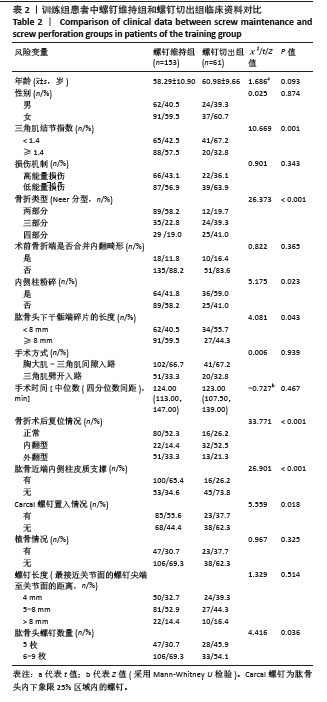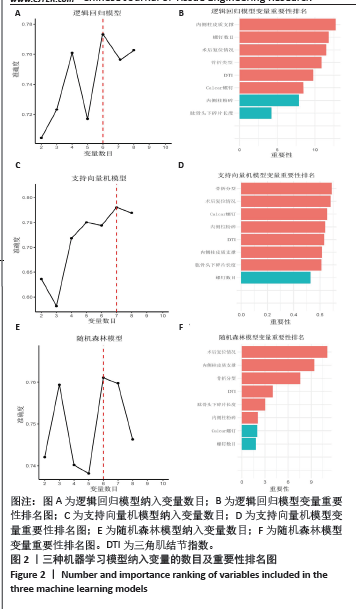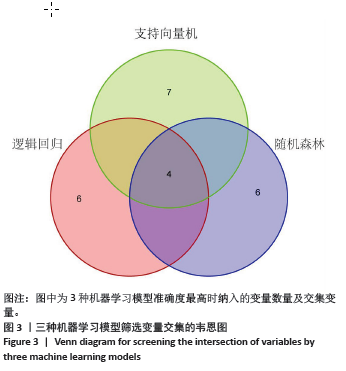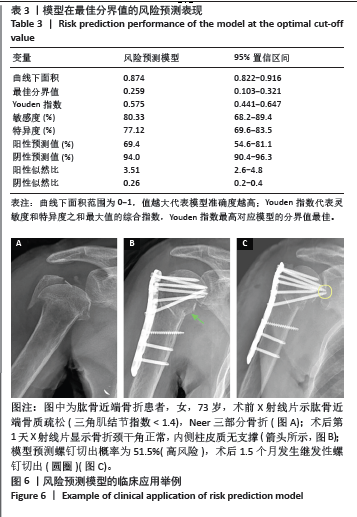[1] KOKKALIS ZT, PAPANIKOS E, BAVELOU E, et al. Avoiding Complications of Locking Plating for Proximal Humerus Fractures. J Long Term Eff Med Implants. 2022;32(3):73-81.
[2] CIRIC D, MISCHLER D, QAWASMI F, et al. Secondary Perforation Risk in Plate Osteosynthesis of Unstable Proximal Humerus Fractures: A Biomechanical Investigation of the Effect of Screw Length. J Orthop Res. 2019;37(12):2625-2633.
[3] FLEISCHHACKER E, SIEBENBURGER G, HELFEN T, et al. Varus malposition relates to functional outcomes following open reduction and internal fixation for proximal humeral fractures: A retrospective comparative cohort study with minimum 2 years follow-up. Injury. 2021;52(3):506-510.
[4] FORURIA AM, MARTINEZ-CATALAN N, VALENCIA M, et al. Proximal humeral fracture locking plate fixation with anatomic reduction, and a short-and-cemented-screws configuration, dramatically reduces the implant related failure rate in elderly patients. JSES Int. 2021;5(6):992-1000.
[5] LAPNER P, SHETH U, NAM D, et al. Management of Proximal Humeral Fractures in Adults: A Systematic Review and Meta-Analysis. J Orthop Trauma. 2023;37(2):e80-e88.
[6] 李波, 熊文峰, 张世民. 锁定钢板治疗肱骨近端骨折中螺钉穿透关节面的研究进展[J]. 中国修复重建外科杂志,2021,35(4):403-408.
[7] SUDKAMP N, BAYER J, HEPP P, et al. Open reduction and internal fixation of proximal humeral fractures with use of the locking proximal humerus plate. Results of a prospective, multicenter, observational study. J Bone Joint Surg Am. 2009;91(6):1320-1328.
[8] 汪秋柯. 肱骨近端骨折分型与锁定钢板内固定术后继发性螺钉穿出的关系[D]. 上海:上海交通大学,2019.
[9] 张明, 陈云丰, 胡海, 等. 肱骨近端骨折内固定术后螺钉穿出肱骨头的影响因素分析[J]. 中华创伤骨科杂志,2015,17(4):282-286.
[10] 汪秋柯, 张明, 陈云丰. 肱骨近端骨折锁定钢板内固定术后螺钉穿出的影响因素及处理研究进展[J]. 中华创伤骨科杂志,2017,19(7):641-644.
[11] 陈潮锋, 石宇雄, 梁锦成, 等. 基于机器学习算法预测全膝关节置换后住院时长[J]. 中国组织工程研究,2021,25(27):4300-4306.
[12] 白皙, 罗云云, 周智博, 等. 基于机器学习算法的大于胎龄儿风险预测模型[J]. 中华流行病学杂志,2021,42(12):2143-2148.
[13] 朱荣火, 黄晶晶, 黄鸿娜, 等. 基于四种机器学习算法建立预测肝癌切除术后复发模型[J]. 中西医结合肝病杂志,2023,33(3):202-208.
[14] MIJDERWIJK HJ, BEEZ T, HANGGI D, et al. Clinical prediction models. Childs Nerv Syst. 2020;36(5):895-897.
[15] CHEN L. Overview of clinical prediction models. Ann Transl Med. 2020;8(4):71.
[16] MCMILLAN TE, JOHNSTONE A J. Primary screw perforation or subsequent screw cut-out following proximal humerus fracture fixation using locking plates: a review of causative factors and proposed solutions. Int Orthop. 2018;42(8):1935-1942.
[17] 白求恩·骨科加速康复联盟, 白求恩公益基金会创伤骨科专业委员会, 白求恩公益基金会关节外科专业委员会, 等. 加速康复外科理念下肱骨近端骨折诊疗规范的专家共识[J]. 中华创伤骨科杂志,2020,22(3):187-196.
[18] 林浩东, 傅慧超, 吴晓明. 《2021版老年肱骨近端骨折治疗指南》解读[J]. 中华创伤杂志,2022,38(9):834-839.
[19] 汪秋柯, 陈云丰. 浅谈肱骨近端骨折的分型[J]. 国际外科学杂志,2017, 44(11):727-730.
[20] SPROSS C, KAESTLE N, BENNINGER E, et al. Deltoid Tuberosity Index: A Simple Radiographic Tool to Assess Local Bone Quality in Proximal Humerus Fractures. Clin Orthop Relat Res. 2015;473(9):3038-3045.
[21] HERTEL R, HEMPFING A, STIEHLER M, et al. Predictors of humeral head ischemia after intracapsular fracture of the proximal humerus. J Shoulder Elbow Surg. 2004;13(4):427-433.
[22] HILL BW, JOYCE C D, SINGH A, et al. Patients With Mild Osteoarthritis Are Less Likely to Achieve a Clinically Important Improvement in Pain or Function After Anatomic Total Shoulder Arthroplasty. Clin Orthop Relat Res. 2023;481(8):1464-1470.
[23] XU J, ZHAN S, LING M, et al. How can medial support for proximal humeral fractures be achieved when positioning of regular calcar screws is challenging? Slotting and off-axis fixation strategies. J Shoulder Elbow Surg. 2022;31(4):782-791.
[24] FLETCHER J, WINDOLF M, GRUNWALD L, et al. The influence of screw length on predicted cut-out failures for proximal humeral fracture fixations predicted by finite element simulations. Arch Orthop Trauma Surg. 2019; 139(8):1069-1074.
[25] GLANS M, KEMPEN T, JAKOBSSON U, et al. Identifying older adults at increased risk of medication-related readmission to hospital within 30 days of discharge: development and validation of a risk assessment tool. BMJ Open. 2023;13(8):e70559.
[26] 徐凌霄, 刘俊, 韩春霞, 等. 基于机器学习的重症股骨颈骨折患者死亡风险预测模型构建和验证[J]. 同济大学学报(医学版),2022,43(6):812-818.
[27] KITCHARANANT N, CHOTIYARNWONG P, TANPHIRIYAKUN T, et al. Development and internal validation of a machine-learning-developed model for predicting 1-year mortality after fragility hip fracture. BMC Geriatr. 2022;22(1):451.
[28] 何继业, 张家红, 蔡贵泉, 等. 锁定钢板治疗不稳定肱骨近端骨折术后内翻的危险因素分析[J]. 中华创伤杂志,2020,36(5):448-454.
[29] KIM DM, PARK D, KIM H, et al. Risk Factors for Severe Proximal Humerus Fracture and Correlation Between Deltoid Tuberosity Index and Bone Mineral Density. Geriatr Orthop Surg Rehabil. 2020;11:1864664671.
[30] SPROSS C, ZELEDON R, ZDRAVKOVIC V, et al. How bone quality may influence intraoperative and early postoperative problems after angular stable open reduction-internal fixation of proximal humeral fractures. J Shoulder Elbow Surg. 2017;26(9):1566-1572.
[31] LORENZ G, SCHÖNTHALER W, HUF W, et al. Complication rate after operative treatment of three- and four-part fractures of the proximal humerus: locking plate osteosynthesis versus proximal humeral nail. Eur J Trauma Emerg Surg. 2021;47(6):2055-2064.
[32] WANG Q, ZHU Y, LIU Y, et al. Correlation between classification and secondary screw penetration in proximal humeral fractures. PLoS One. 2017;12(9):e183164.
[33] JUNG SW, SHIM SB, KIM HM, et al. Factors that Influence Reduction Loss in Proximal Humerus Fracture Surgery. J Orthop Trauma. 2015;29(6):276-282.
[34] HAWS BE, SAMBORSKI SA, KARNYSKI S, et al. Risk factors for loss of reduction following locked plate fixation of proximal humerus fractures in older adults. Injury. 2023;54(2):567-572.
[35] AGUDELO J, SCHÜRMANN M, STAHEL P, et al. Analysis of efficacy and failure in proximal humerus fractures treated with locking plates. J Orthop Trauma. 2007;21(10):676-681.
[36] GARDNER MJ, WEIL Y, BARKER JU, et al. The importance of medial support in locked plating of proximal humerus fractures. J Orthop Trauma. 2007; 21(3):185-191.
[37] WEEKS CA, BEGUM F, BEAUPRE LA, et al. Locking plate fixation of proximal humeral fractures with impaction of the fracture site to restore medial column support: a biomechanical study. J Shoulder Elbow Surg. 2013; 22(11):1552-1557.
[38] WANG Q, SHENG N, RUI B, et al. The neck-shaft angle is the key factor for the positioning of calcar screw when treating proximal humeral fractures with a locking plate. Bone Joint J. 2020;102-B(12):1629-1635.
[39] 常祖豪, 张伟, 唐佩福, 等. 内侧支撑重建增强固定技术在肱骨近端骨折治疗中的研究进展[J]. 中国修复重建外科杂志,2021,35(3):375-380.
[40] SUN Q, WU X, WANG L, et al. The plate fixation strategy of complex proximal humeral fractures. Int Orthop. 2020;44(9):1785-1795. |




